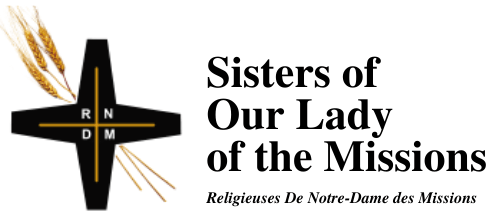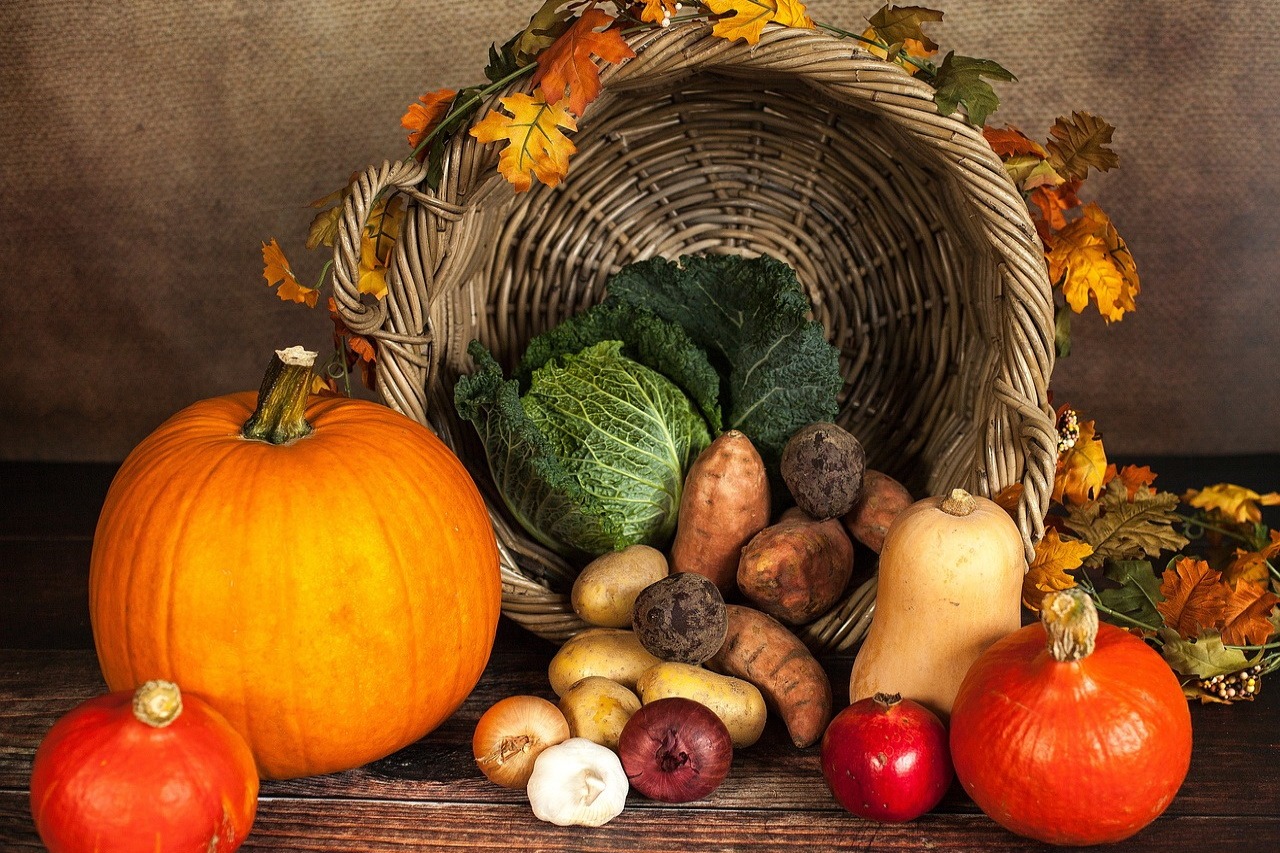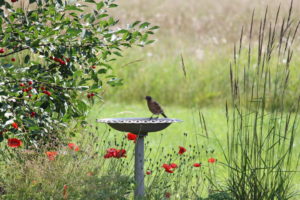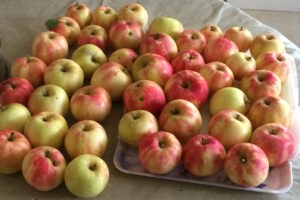The Horn of Plenty, associated with our Thanksgiving Day and overflowing with a diversity of fruits and vegetables, is the image in my mind each year as I plan the edible garden, sow seeds, transplant seedlings, water, prune, and harvest.
But climate change, with the unpredictable weather it’s bringing, is introducing new challenges to my annual hope for bountiful yields. How can I, as a gardener, respond?
Two major responses to climate change are mitigation and adaptation. There are many ways gardeners can help mitigate climate change: composting kitchen scraps and garden waste instead of sending them to the landfill where they will add to methane emissions; using our homemade compost instead of energy-intensive manufactured fertilizers; and growing a diversity of plants including trees to store carbon on our properties are just a few. Because climate change is already affecting our weather, I am trying to learn ways to adapt as well.
With information from the Prairie Climate Centre1 in mind, I have been applying various strategies focused on water conservation: capturing and storing rainwater in large containers for use during dry periods; mulching to reduce evaporation from the soil; growing more drought and heat tolerant plants when possible and applying principles of permaculture.
The word, “permaculture,” is a contraction of two terms: “permanent culture” and “permanent agriculture” and was originally coined by two Australians, Bill Mollison and David Holmgren. They identified several principles in nature and in indigenous cultures that contribute to sustainable, abundant systems and can be applied in many contexts besides agriculture.2
One of the core principles of permaculture, “each function is supported by multiple elements,” is gaining my deep respect. In the food garden, this means planning for some redundancy so that if one crop fails another could still feed us.

This year’s late spring, generous rainfall and cooler temperatures alleviated the pressure of frequent hand-watering required last year, but also contributed to later maturing of heat loving crops like tomatoes, winter squash and many pole bean varieties. I hoped for a delayed fall frost to give enough time for winter squash to mature properly. Summer squash like zucchini thrived — does zucchini ever disappoint? Including earlier maturing varieties like ‘Sweetie’ cherry tomatoes guaranteed a yield in case we had an early fall frost. (Cherry tomato varieties are also a good choice during hot, dry summers because they can grow well with less water than the larger fruiting types.) Brassicas such as cabbage and kale and root vegetables such as carrots and beets thrived with the cooler summer nights and ample moisture. The extra rainfall meant generous harvests from fruits like Saskatoon berries, black currants, cherries and apples. The diversity in our garden meant that there were “multiple elements” to support the function of providing food for us to eat and preserve for winter.
So, what can I take from this year’s gardening experience? Growing a diverse selection of food-bearing plants and including different varieties within the specific vegetable families are key to building resilience in our gardens. As I plan future gardens for unpredictable growing seasons, deep gratitude for this gift of diversity still available to us in the world of plants will accompany me, as well as a renewed commitment to support initiatives that try to preserve this diversity for all of us.3
1 For detailed climate information on Canada including maps, graphs and personal stories, check the website for The Prairie Climate Centre: https://prairieclimatecentre.ca/
2 This description was taken from Gaia’s Garden: A Guide to Home-Scale Permaculture, Toby Hemenway, Chelsea Green Publishing Co., White River Junction, Vt, 2nd ed, 2009, page 5.
3 I will discuss one of these initiatives in my next post to this blog.
Wendy spent a good part of her adult life moving with her husband, never staying long enough to see an apple tree mature and bear fruit. When they retired, developing a food garden and planting hardy ornamentals became a passion. Weaving her previous studies in nutrition with her current interest in gardening has become a stimulating and life-giving activity.





So enjoyed the gardening blog today, touched on so many things dear to my heart. Thank you, Wendy! It really was a meditation on gardening. I appreciate the practical tips as well as the musings on climate change. Looking forward to the next one!
Kathy Cameron
Thanks so much, Wendy. Anything we can do to preserve diversity in the world sounds like God-like creativity to me.
I always learn something when I read from your fountain of knowledge. We ate another of your zucchini’s last night along with the garlic you grew and generously gifted. Hmmmm. Good!
I have learnt a lot this morning, Wendy, in particular, about mitigation and adaptation. I did not know that sending kitchen scraps and garden waste to the landfill adds to methane emissions.
You wrote: “each function is supported by multiple elements”. Today, I am thinking of this significance – for gardens, and for all life-communities – furred, feathered, finned or human.